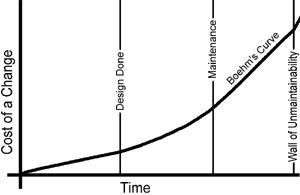Run by Chet Hendrickson and Ron Jeffries
This class is taught by a Certified Scrum Trainer but is not a certification course.
This course is part of the Certified Scrum Developer (CSD) curriculum. Successful completion of this course fulfills the technical training requirement for becoming a CSD. Interested individuals, however, can attend this course outside the CSD track. The course material and trainers have been vetted and approved by the Scrum Alliance. Please contact the trainers directly for questions about registration, course material, or logistics.
Agile Developer Skills: Technical Practices from Extreme Programming
Scrum’s incremental-iterative approach to software development requires Development Teams to find, learn, and implement solid technical practices. In recognition of this, the Scrum Alliance has created the Certified Scrum Developer program. This course is the first to meet the Scrum Alliance requirements for training in support of the CSD rating. Frankly, we intend this course to be a benchmark of how to do this.
Jeff Sutherland, co-creator of Scrum, has said that the only hyper-productive teams he has seen have been using XP-style technical practices. This is no surprise: the practices shown below are practically essential to working in the Scrum style:
Jeff Sutherland, co-creator of Scrum, has said that the only hyper-productive teams he has seen have been using XP-style technical practices. This is no surprise: the practices shown below are practically essential to working in the Scrum style:

Participants in this course will experience the basic technical practices required to sustain a Scrum Project:
- Collaborative Software Development
- Test-Driven Development
- Acceptance Testing
- Simple Design
- Refactoring
- Continuous Integration
- Coding Standards/ Java Implementation Patterns
Using Java /Eclipse, thoughtfully crafted simulations, lecture, and discussion, we will build the strong technical foundation required to be a full member of a Scrum Development Team.
Course Prerequisites
- This course does not cover Scrum/Agile basics but if you are experienced in agile you should be OK. If in doubt, check with us.
- Working knowledge of Java and Eclipse. This is a course for developers after all.
- A laptop with Java and Eclipse installed. We will use pair-programming for all coding exercises, so even if you don’t have a laptop we will pair you with someone who does. If one, please plan to set up Java/Eclipse and bring it.
Course Logistics
Unless otherwise noted, we will provide drinks and snacks. Check the registration page for the specific course you are interested in to see if a hotel discount is available.Summary
Developers on Scrum teams, or on other forms of Agile teams, or who are interested in preparing to work on such teams, will benefit from this course. You will experience real team-based iterative development of software under the guidance of a Product Owner. You’ll get exposure to how to do the necessary and desirable practices, and some experience doing them.The primary benefit of this course will be the learning. You will also have accomplished a necessary step to attaining the Certified Scrum Developer Rating.
